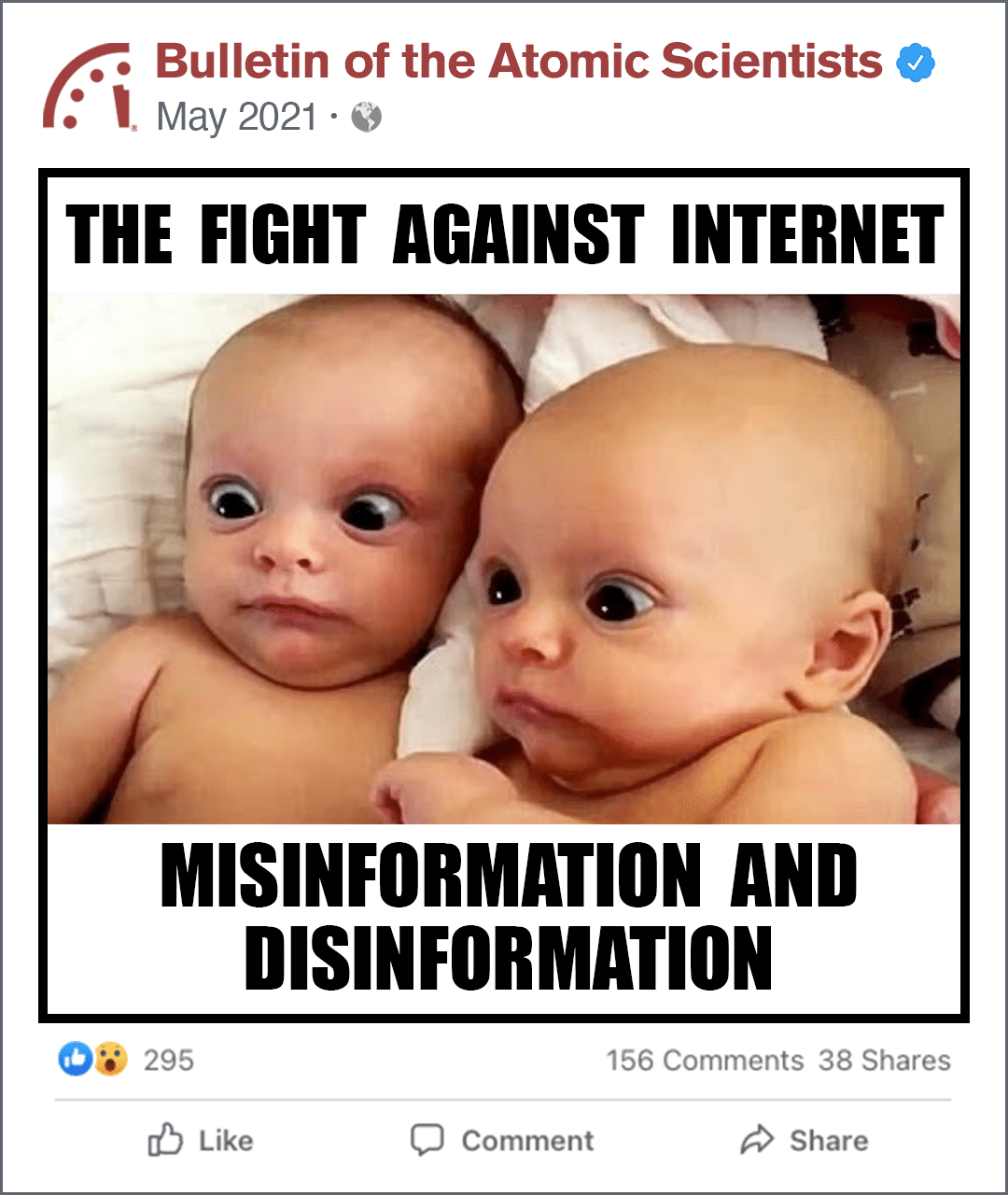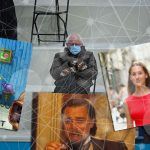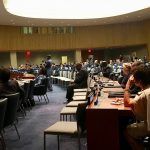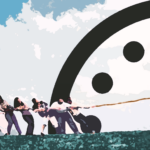Alan Miller: How the News Literacy Project teaches schoolchildren (and adults) to dismiss and debunk internet disinformation
By John Mecklin | May 13, 2021
Alan Miller: How the News Literacy Project teaches schoolchildren (and adults) to dismiss and debunk internet disinformation
By John Mecklin | May 13, 2021
Editor’s note: Want to hear more from Alan Miller? Register here for our June 23 virtual program.
Internet-based disinformation did not originate, by any means, in the Trump administration, but the 2016 US presidential campaign marked a turning point of sorts. A presidential candidate actively sought to blur the line between truth and evidence-challenged assertion and, once in office, continued prevaricating for four years about matters large and small.
As President Trump told more than 30,000 lies[1] and inspired a vast online expansion in the paranoia and conspiratorialism[2] that have long been part of the underbelly of American politics, mainstream media outlets and social media platforms alike struggled—often unsuccessfully—to counteract the rush toward the world of “alternative facts,” QAnon, white supremacy, the COVID-19 infodemic, and conspiracy theorizing in general.
In 2008, Alan Miller, a Pulitzer Prize-winning investigative reporter for the Los Angeles Times, founded a nonprofit, the News Literacy Project,[3] that aimed to help schoolchildren navigate the morass of information streaming at them through their computers and a brand new addition to the online world, the iPhone. In this interview, Miller describes the evolution of the nonprofit which, he notes, became suddenly and unmistakably far more relevant during the 2016 presidential campaign. The project’s virtual classroom, known as Checkology,[4] features interactive lessons led by journalists and digital media experts who help students learn to “identify credible information, seek out reliable sources and know what to trust, what to dismiss and what to debunk.”
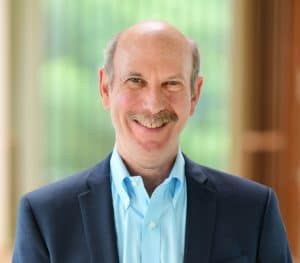
The News Literacy Project is just one of many[5] organizations advocating for or providing education[6] that aim to combat internet mis- and disinformation. It is one of the most prominent media literacy efforts. It has partnered with more than 30 news organizations, including The New York Times, The Washington Post, CNN and many other prominent legacy and digital-native publications and sites.
Checkology has racked up significant numbers of users; the News Literacy Project claims that about 33,000 educators and more than 1,275,000 students had registered to use it between May 2016 and March of this year. (The corresponding figures from this fiscal year are 2,368 educators and 127,038 students.) And the project distributes its news literacy and anti-disinformation messages in newsletters, NewsLitCamps led by journalists, and other ways, including Miller’s own writing.[7]
By the News Literacy Project’s metrics, Checkology has shown success in teaching students about the role of a free press and the First Amendment in a democracy and in “acquiring habits of mind to verify news and information, to know what’s credible.”
“What we sometimes talk about,” Miller says, “is teaching them to think like journalists, because everybody in an information age is their own editor and everybody can be their own publisher, and having them play those roles in ways that are responsible and credible empowers their voices.”
Still, research shows[8] that students in the United States have far to go in terms of learning how to tell fact from fiction online. In this interview, Miller explains how the News Literacy Project came to be and what he thinks needs to happen if the worst impacts of the disinformation tsunami that has swamped the internet in recent years are to be mitigated.
John Mecklin:
Why did you start the News Literacy Project? It seems like it was almost ahead of its time, 2008.
Alan Miller:
So, in 2006 I was an investigative reporter in the Washington Bureau at the L.A. Times, and I was invited to speak to 175 sixth graders at my daughter’s middle school about what I did as a journalist and why it mattered. And at that time I was already concerned about two things.
One, was how Julia was accessing and evaluating this tsunami of sources of information of such varying credibility, accountability and transparency. And the other was the wrenching transformation that was already under way as the business model for journalism collapsed and whether there would continue to be an appreciation for quality journalism among the next generation.
So on my way through the parking lot after my talk I found myself thinking this is a long way from investigative reporting, but if a lot of journalists did what I had done, it could be quite meaningful and impactful in America’s classrooms. And that evening Julia brought home 175 handwritten thank you notes, and we sat and we read them all aloud, and I could see where I had connected and what had resonated.
And that was the seed of the idea that subsequently grew into the News Literacy Project.
John Mecklin:
Well it certainly seems like you’ve gained a lot of support and funding through time. I guess my question is, when you were starting it did you have a bunch of research that said “Well if we do X, we will get Y result.” I mean how did you start out to develop this Checkology, as your program is called?
Alan Miller:
Okay, good question. Lots of steps there embedded in your question. When I started in 2006, when the idea first arose, the first iPhone was coming out. Facebook was just beginning to gain some reach. I mean, it was very early in terms of the kind of fraught ecosystem that has evolved since then.
But I did have a sense that this was going to become a much greater challenge moving forward, and I also had a sense that what journalists did, the process of verification and of determining what was credible, was a very broadly applicable critical thinking skill that was only going to become more important for the population in general moving forward.
And I had an enduring faith in journalism and journalists to be able to share this and to find a way to teach it. In many ways I really took a leap of faith here. There was no research. There was no field of news literacy at the time. I helped really create that field when I started, and I had been a journalist for 29 years. I had no background in education or working in the nonprofit world.
It was kind of an enduring belief that I had, and so I then embarked on establishing a board and a curriculum and initially working with a seasoned educator. He brought the pedagogy, I brought the journalism, and one year to the day from when I initially took a leave from the LA Times we had a basic curriculum to launch in a middle school in Williamsburg in Brooklyn.
That was our starting point and then we moved to a high school shortly thereafter in Manhattan, the Facing History High School, and then a high school here in D.C. and then subsequently Chicago. So we developed an original curriculum that was essentially a drop-in unit, not to displace anything that was being used but to fit in when teachers were teaching about the First Amendment or about the press and government or about doing research to be used in history, social studies, government, English and journalism classes in middle schools and high schools.
And basically we learned by doing. We got into different schools and did assessments to measure changes in students’ knowledge, attitudes, and behaviors. I spent a lot of time in classrooms observing journalists. I enlisted almost three dozen news organizations, 400 journalists in an online directory who came in to talk to students as a part of this drop-in unit.
And that became sort of our initial laboratory and showcase over the first eight years or so that we were able to establish some proof of concept. We were able to continue to improve what we were doing, and I had my second piece of enduring faith—I mean people said you’ll never get into schools; I believed that we’d be able to do that ultimately, and that this would have enough value.
There were a lot of great questions about how you scale this moving from dealing with one classroom at a time, one teacher and 25 students, and I always believed technology would show us the way. Ultimately, we developed a very rudimentary digital unit that we piloted in Chicago, New York, and D.C. using journalists doing narrating videos. We found that that worked well enough for us to raise the funds to build a virtual classroom that we call Checkology and then launch in May of 2016 as our really great leap to move to national scale.
John Mecklin:
It does seem to be awfully successful. What are the numbers right now in terms of how many classrooms you reach, roughly?
Alan Miller:
So, I need to probably check the numbers on the educators, but I can tell you we are now, this school year we have had—again I can go back and get you the precise number, but it’s well over 100 000 students that have registered. I know we’ve had over 76,000 students complete at least one lesson, meaning they’re active on the platform. We’re working with at least two dozen districts directly at the district level, including the largest districts in the country: New York, LA, and Chicago.
And then districts throughout North Carolina, South Carolina, Alabama, Indiana, Missouri. I mean, throughout the country, in red states, in blue states, in purple states, and we’ve seen a really significant uptake.
And whenever we’re getting in front of districts at the district level, the heads of teaching and learning, the heads of social studies, the heads of English language, arts, they’re enthusiastically adopting the platform and making it available.
John Mecklin:
Is there a red state problem? When you go to districts in Alabama is there a difference in the response?
Alan Miller:
We just signed up Birmingham recently, as a matter of fact. No, and we’re in West Virginia in a number of places. We’re finding adoption throughout the country, and we are rigorously—and this is one of the things I’m most proud of—we are rigorously non-partisan in everything we do; it’s in our DNA. It’s something that I brought and others on the board brought from journalism, and you can see it in terms of our board, in terms of our funders, but most important in terms of all of our resources.
And in the case of Checkology, you can look at every word of text, every photo, every piece of video and determine if you think it has an agenda or a bias. And obviously if somebody thought that, we would take it very seriously. So we’re proud of the fact that we’re being widely used across all regions, urban areas and rural areas, throughout the country.
John Mecklin:
There’s a question to do with false equivalence, and I want to see if I can ask it in some fairly efficient way. Okay, to be non-partisan, to teach kids how to process some piece of information that they come across on the internet, that’s one thing. At the same time there are many news sites that aren’t news sites at all. Breitbart is not the equivalent of The New York Times and Fox News is not the equivalent of The Washington Post. And so I am interested in hearing you talk about—how do you teach that without people on the right jumping up and screaming?
Alan Miller:
This goes to the heart of our methodology. What we’re doing is giving students and now the general public—we’re now creating resources for the public as well, starting last fall—the critical thinking skills to make judgments about whatever they encounter. Whether this is something, I should trust; should I share this, should I act on it?
And we are not telling them what to believe in terms of a site, kind of platforms, the sources of news and information, or what not to believe, because the fact is that even in the most reputable news site, you’ve got a combination of news and opinion and advertising, and it’s also imperfect by its nature, which is one of the things we teach. We use the standards of quality journalism as an aspirational yardstick against which to measure all news and information, but we teach that it’s imperfect. So even well intentioned, highly competent journalists will occasionally make mistakes, not because they make things up or create fake news, but because of the rush of deadlines, competitive pressure, sources lie or mislead, or human error.
Bias will creep in, even if there’s an effort to be dispassionate, and sometimes journalists even in reputable outlets will make serious errors in what they present. And then there’s the combination of all of these different kinds of information. So, we really want students or anyone who is using Checkology or our other resources to ask these questions about what they’re encountering and to make those judgments.
And we believe that if they do so—and we know this from our data and anecdotal experience—they’re going to be led to more credible sources of information and more credible news outlets. We also do encourage them to get a wide information diet, and we have lessons that deal with this on algorithms, on bias, not just to go to places that are likely to confirm their preexisting beliefs but perhaps maybe to challenge them.
Then the other piece is we choose examples in Checkology—it’s filled with resources that deal with contemporary issues—or in weekly newsletters, where we look at the most recent viral rumors, hoaxes, and conspiracies theories. So we’re constantly choosing examples, and even there we’re careful about having a mix of different topics and sources and outlets that we’re sharing. We’re also debunking at the same time, and we teach about false equivalence. So I don’t think that we get into that trap.
John Mecklin:
Obviously, a big part of everybody’s news diet comes through social media, and I was just curious if the major social media companies have been receptive to your efforts. I mean have they helped in any way? Are they helping you advertise the News Literacy Project? Are they giving you money?
Alan Miller:
So, we didn’t have any support from Silicon Valley, from the tech world, prior to the 2016 election. That was a watershed of course for many people. It was certainly a watershed for us and for the field, and in many ways we learned so much about what goes on with these platforms. And, of course, we’ve got the Russian disinformation campaign and for us it felt a little bit like going from a voice in the wilderness to an answer to a prayer.
Suddenly we did start to get money from tech companies. We’ve had a lot more attention from the news media. We got a lot more interest from educators. So that was a watershed. We have received funding from the Facebook Journalism Project, but they’re not a current funder. We’ve received some in-kind help from Twitter through Twitter AdWords. One of our biggest funders now is Apple and we’ve received some funding from some others out in Silicon Valley. We did receive a generous gift from Jeff Bezos. And this all was in the wake of the 2016 election.
John Mecklin:
I imagine that a few people saw what you’re doing as being a little more valuable after 2016.
Alan Miller:
Yes.
John Mecklin:
What is the age range that you’re aiming at? I’m assuming that you’re starting fairly young, and it’s mostly through high school, but is this also being pushed out to colleges? Because I would assume the material has to be tailored for age range, correct?
Alan Miller:
We’ve made the focus on middle school and high school; initially we sort of wanted to see where this would work so we cast a wide net. And we found we can make it work everywhere, though not necessarily every time. So we’re talking about really 12 to 18, 6th grade to 12th grade. Sort of the sweet spot with the standards is the 8th to 10th grade band.
But I will tell you that we’ve had educators use it with students who are younger—they need to do more scaffolding—and we’ve certainly had educators use it at the community college and college levels. Some of the lessons are more foundational and are really better suited for younger students, and some of them are more sophisticated. There are lessons where I learned things when I edited them about branded content and the role of algorithms. We have a really great new lesson on conspiratorial thinking, and some of those could certainly be used at an older level.
And we’ve now created a version of Checkology for the general public. and we’ve taken out some of the things that really aim more at the teacher-facing front, and we’ve got people using it who are in the general population. And I do think that again, with some of the lessons, there is real value across all age bands.
We recognized early last year that disinformation is just an enormous challenge across all generations. And I’ve been hearing this almost from the start, people say, “This is great, you’re doing this for kids, but what about me? Or what about that person that’s always sending me things they should not send or always watching only that station?”
John Mecklin:
Or what about Uncle Pete as we call him?
Alan Miller:
Yes, so we decided to create a series of resources for the general public. This includes, a Checkology for all. We have a weekly newsletter called “The Sift” which takes the most recent viral rumors, conspiracy theories, and hoaxes and turns them into timely lessons of links and discussion prompts. We created a general population version of that called “Get Smart About News.” The Sift comes out on Mondays. Get Smart About News comes out on Tuesdays.
We created an app, this is over a year ago now, called “Informable,” which is a news literacy game that tests and builds news literacy skills. That’s for all ages; within two weeks of that coming out, the Apple editors declared it one of the apps we love right now. We started a podcast called “Is that a fact?,” which focuses on the role of misinformation in a democracy, and I’m now writing a column every other week called “Upon Reflection” where I look at issues around journalism, news literacy, and education.
So by the fall we had launched all of those resources for the public, in addition to our primary focus, which is working with educators to reach middle and high school students.
John Mecklin:
Our experts are really focused on this; I have sat in meetings where some of them have said, “Disinformation is really a problem. And I don’t have a clue about how to really address it.” On the level of once it happens, trying to track it all down and debunk it—that’s one thing and that does seem like a pretty tough thing. You seem to be more on the front end, teaching people to be their own defenders.
Alan Miller:
Look, I think this is a multifaceted challenge, and obviously it needs to be tackled on multiple fronts. I think you can’t effectively try to combat misinformation without having education as a piece of it and the need to inoculate people against it. Conspiracy theories, hoaxes, viral rumors—they’re so prevalent, they’re so virulent. Sometimes they’re very difficult to decipher. They appeal to emotion, and we’ve really seen the kind of jaw-dropping vulnerability of millions of Americans to conspiratorial thinking, whether you’re talking about COVID or you’re talking about QAnon or you’re talking about the elections.
We’re just racing against a rapidly rising toxic tide here. I really think that we need to have a sea change in the way that we consume and especially share news and information, that people need to have a much greater sense of both mindfulness and personal responsibility, so that they say, “I’m going to be a part of the information solution instead of the misinformation problem.”
I think we need to see something comparable to what we’ve seen around issues like drunk driving and smoking and littering. The difference is those changes took a long time, and I don’t think we have a lot of time. We are rapidly moving toward an information dystopia, and we’ve just seen our democracy have this stress test that it barely survived, and I think that if we don’t really seriously tackle this problem, we might not be so fortunate next time.
So, I think that education is critical; it’s one reason we moved to doing the general public. We had this sense that we just can’t focus solely on the next generation. We need to do this for everybody. I do think that there’s a growing awareness—just as the 2016 election was a wake-up call in many ways for what’s happening on the platforms or for what’s happening with the Russians—I think 2020 was another kind of wake-up call. I think there’s a recognition that [disinformation is] a national security problem, and it’s really a threat to everything. When you step back, and you say, “Why do facts matter?”—they matter because they’re the basis for what we teach in our schools. They’re the basis for our scientific inquiry and findings. They’re the basis for our public policy, debates and decisions.
And if facts are in trouble, so is democracy, so is our civic life. And that’s why I think that this is everybody’s responsibility. We aspire to use our resources and expertise and reputation to leverage what we’re doing with new partners and new supporters. We’ve grown a great deal, and we’ve expanded our reach and impact, but we and certainly others in the news literacy and media fields feel that we can’t do this alone.
It’s really going to require, I think, a really massive effort to defeat this existential challenge or at least contain it.
John Mecklin:
I agree, and so I’m going to ask you what will really be my last question. It’s been high on my mind that a solution to disinformation, a way forward, is to spend a lot of money on counteracting it. My notion would be: Why aren’t there very high taxes on the companies that profit from misinformation? That could be repatriated to your kind of efforts, government efforts, all sorts of ways of supporting legitimate news.
In other words, why aren’t there higher taxes on social media? On the Googles of the world too. What do you think about that?
Alan Miller:
I think that’s a legitimate question. It’s not only a legitimate question in terms of this kind of education, but also in terms of news and supporting news. We’re seeing this shuttering of so many local news organizations that I think is another serious threat to democracy if you don’t have the watchdogs, the boots on the ground, people at the city council, at the planning boards, the boards of education, the statehouses.
So I think that revenue could come from [taxes on social media]. I think that revenue could come from philanthropy, from private individuals. I think there’s another key element, which is state teaching standards. We’ve seen a move away from civics in many respects; media literacy is really a key element of civics. I think that states should require, whatever they call it, they can call it civics, they can call it media literacy. But it should have this element of teaching students the essential survival skill of how to know what news and information to trust, and giving them an appreciation of the role of the First Amendment and a free press and democracy.
One way or another, that should be required in every classroom, certainly by the time a student is through middle and high school. It should be embedded in their educational experience, and that’s something we advocate, we support. If that could be done, then, yes, I think more resources to build capacity makes sense, too.
Together, we make the world safer.
The Bulletin elevates expert voices above the noise. But as an independent nonprofit organization, our operations depend on the support of readers like you. Help us continue to deliver quality journalism that holds leaders accountable. Your support of our work at any level is important. In return, we promise our coverage will be understandable, influential, vigilant, solution-oriented, and fair-minded. Together we can make a difference.
Keywords: 2024 election, Checkology, Disinformation, News Literacy Project, fact-checking, news literacy
Topics: Disruptive Technologies

